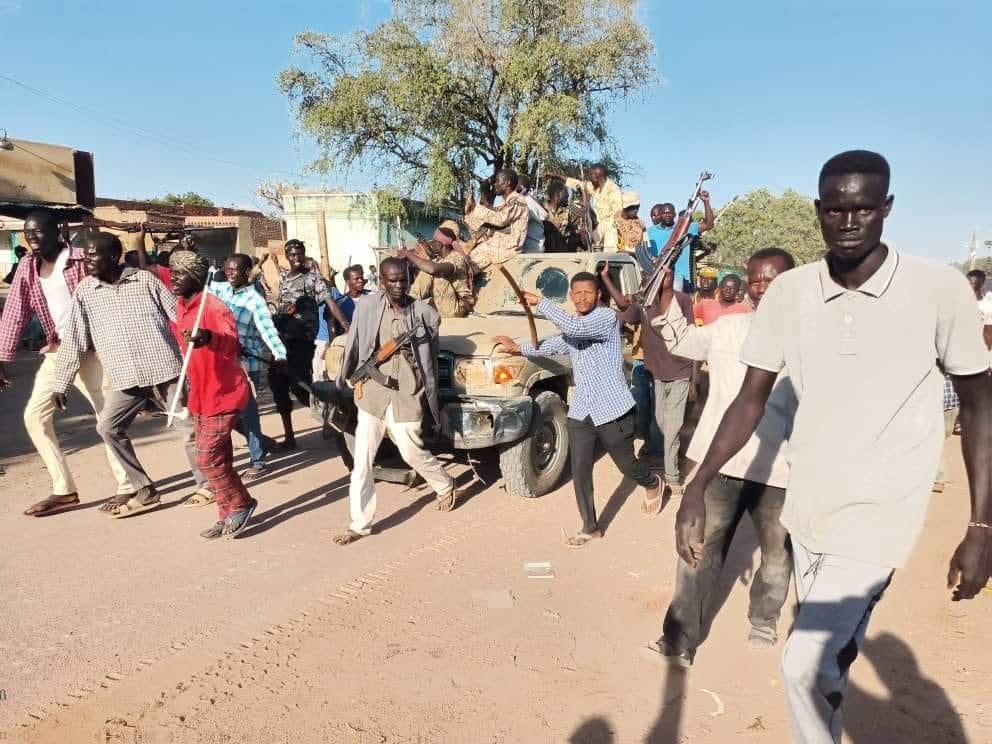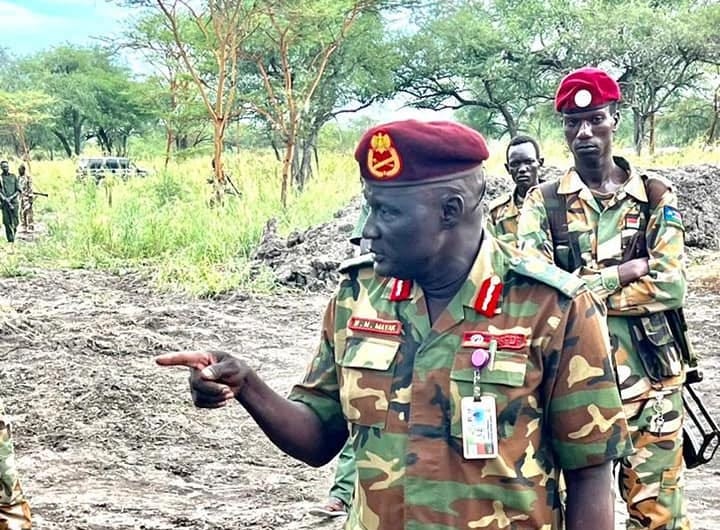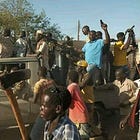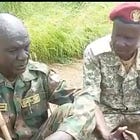Kordofan conflict spirals in dangerous direction
Deteriorating security conditions in all three Kordofan states
The security situation is deteriorating across much of Sudan’s Kordofan region, along with economic and humanitarian conditions, following an attack by the Rapid Support Forces (RSF) on the city of Dilling two days ago.
Although fighting reportedly has calmed down in Dilling itself, political observers and humanitarians are warning of the growing risk of a humanitarian disaster and ethnic violence. The city is inhabited by both Nuba and Arab tribes.
“We're gravely concerned that another city in Sudan, Dilling in South Kordofan, is in terrible peril, due to armed conflict between three powerful warring parties,” said William Carter, the Country Director of Norwegian Refugee Council in Sudan, writing on the social media site X (formerly Twitter) today. “Over the past few days, thousands of residents have been forced to leave, although the city is now surrounded by these military, paramilitary, and rebel forces and some are unable to flee. A looming threat of ethnic violence hangs over Dilling and beyond.”
Two bodies were hung up with chains in Dilling’s central square on Wednesday afternoon, stripped half-naked. One was hung by the neck, and the other by the feet, upside down. “Dilling is the graveyard of the janjaweed,” said a man who filmed it, according to a video reviewed by Sudan War Monitor. “The number of janjaweed animals that we killed was 47 in the battle of Dilling today, January 10.”
“See how your people are crucified? Any janjaweed mercenary who enters this land will meet the same fate.”
This is the second time in under a week that bodies were publicly desecrated in the Dilling market. An alleged traitor, a member of the Sudan Armed Forces, was hung upside down in the same place last weekend, reportedly as a reprisal killing following an attack by the RSF on the nearby town of Habila.
Commenting on news of this incident, the head of the National Umma Party, Fadlallah Burma Nasir, blamed the leaders of the army and the RSF for “racist mobilization” of people against each other. As quoted by Al-Taghyeer [Change] newspaper,
Burma considered what happened in Dilling in South Kordofan state the beginning of the dismantling of Sudan, and pointed out that it was the result of Burhan and Hemedti’s war and ethnic mobilization.
In statements to Al-Taghyeer, he condemned ethnic and tribal conflicts, and stressed that his party would resist attempts to tear Sudan apart with all its might.
He added, “Despite the history of wars that exceed 50 years in Sudan, the crucifixion incident that occurred in Dilling is something that happens for the first time and is a dangerous development.”
RSF’s attack on Dilling may have been instigated by earlier skirmishes in the city’s western neighborhoods, which are predominantly Arab. Since last month, there were reports of displacement from Arab neighborhoods, including burning of homes in the Abu Zeid area. As reported by Ayin yesterday,
Over the past few days, the armed clashes have been concentrated in the neighborhoods of Abu Zeid, Al-Maasir, and Al-Safa, which are located in the western part of the city of Dilling, and are inhabited by groups of the Arab component, especially the Hawazma tribe, many of whose members are in the ranks of the Rapid Support Forces.
Witnesses from Dilling told Ayin that military forces attacked the western neighborhoods of the city after members of the RSF infiltrated them, which led to the displacement of hundreds of residents to Al-Goz, Al Debeibat, and El Obeid areas. There are widespread fears that the conflict will turn into a tribal war in Dilling, while residents have begun to leave the city amid appeals from army commanders in the region to remain in their homes and not leave them.
Similarly, Al-Taghyeer reported, “According to eyewitnesses, a large number of citizens’ homes in the al-Goz, al-Matar and Abu Zeid neighborhoods, which are areas specific to the Hawazma tribe, were completely burned down.”
Following the fighting Wednesday, Abdul Wahab Azraq, a journalist residing in Dilling, told Asharq Al-Awsat that the city “is living in a state of calm.” He said the Sudan Armed Forces and the SPLM-North, fighting alongside each other, “achieved a major victory over the attacking forces, killing dozens and destroying many vehicles.”
According to Abdul Wahab, the attacking force was mounted on about 60 combat vehicles and the fighting lasted about two hours, after which the RSF withdrew toward al-Debeibat, a town 60 km north of Dilling.
This may be the first time that SPLM-N and SAF have fought alongside each other. Politically, SPLM-N are neutral in the current war between the army and the RSF, but ethnically their troops have more in common with the army. Both SAF and SPLM-N include many Nuba fighters, and the commander of the Dilling garrison reportedly is Nuba, whereas the RSF consists of mostly Arab fighters.
Asharq al-Awsat contacted a source in SPLM-North for comment about the developments in Dilling, but the source said they “have not yet decided to comment on the news about their participation in the Dilling operation.”
Reported telecommunications outages have limited the amount of information coming out of Dilling and other parts of Kordofan. Yesterday, some social media users reported some residents had returned to their homes, while hospital patients were being relocated. A number of civilians were wounded by a shell at the Dilling mosque, and they sought treatment at the military hospital.
There were also reports of airstrikes and reconnaissance aircraft flying over the city.
Civilians wanting to leave Dilling have few options. The roads are dangerous, fuel is lacking for travel, and most towns of Kordofan are suffering electricity and power outages, food shortages, and a lack of medical services. El Obeid Hospital has run out of oxygen and other life-saving medicines, and the price of bread has increased.
According to Carter, the NRC aid worker, humanitarian access in South Kordofan was limited even before the latest clashes, due to “unsafe roads, denied permissions for humanitarian workers, frequent clashes, and a significant presence of armed groups."
Another wave of displacement in West Kordofan
Fears of fighting again have swept the city of Babanusa, headquarters of the 22nd Infantry Division. Babanusa is one of only a few places in West Kordofan where the army is still present. Misseriya tribal leaders have attempted to broker a local truce between RSF and SAF, on the basis that sons of the tribe belong to both groups.
However, following the failure to reach an agreement, “information is being circulated about an impending attack on the division’s headquarters in Babanusa in the coming days,” according to Radio Dabanga. “An atmosphere of tension and rumors have pushed citizens to start leaving the city of Babanusa in what could be considered the third wave of displacement of its kind since last September.”
Families that fled to neighboring villages face difficult conditions, including cold, food shortages, a lack of health care, and an increase in newborn mortality.
Meanwhile, in the city of Mujlad, southwest of Dilling, a convoy of RSF fighters entered the city yesterday, possibly coming from Dilling. In general, Mujlad was already under RSF control, with minimal if any SAF presence.
Background: Conflict dynamics in the Kordofan States
Sudan’s vast Kordofan region (pictured) is divided into three states, each with its own conflict dynamics, different livelihoods, and different ethnic makeup.
North Kordofan: North Kordofan has witnessed some heavy fighting, mostly around the capital El Obeid, home of SAF’s “Camel” division. In general, RSF move freely across North Kordofan State, moving troops and supplies from the RSF’s place of origin, Darfur, toward the main theatre of war in central Sudan. Convoys carrying plunder and wounded fighters cross the state in the other direction.
South Kordofan: South Kordofan is home of the Nuba Mountains, controlled largely by the Sudan People’s Liberation Army-North. Most of these rural areas remain unaffected by violence since April, at least not directly.
The Sudan Armed Forces, however, control the capital Kadugli and Dilling, the second largest city. Historically, they also controlled smaller garrison towns and the mechanized agricultural areas in the valleys of the region, but in recent months the army withdrew from some of its smaller garrisons. The RSF attacked other garrisons, including Habila two weeks ago.
During the early months of the war, SPLM-N took advantage of the army’s weakness to expand its control, but hostilities between the two sides have largely ceased. Now, there are growing tensions between SPLM-N and RSF at the field level, particularly in Dilling. But the two sides are not openly at war and the political leadership seem to remain committed to keeping it that way.
West Kordofan: Ethnically dominated by the Misseriya Arab tribe, West Kordofan has remained relatively conflict-free compared to other states. The RSF exert de facto control over much of the state, though the army remain in control of Babanusa, the state capital Fula, and some oil areas. West Kordofan borders the disputed Abyei area, claimed by South Sudan.
In October, the RSF attacked Baleela oilfield, overrunning the defenders and prompting SAF to consolidate its defenses toward Babanusa. There is a risk that fighting could spread soon to the Heglig oilfield area, which borders South Sudan.
South Sudan army moves troops to the border
Yesterday, a South Sudanese military source told Sudans Post that the RSF have recruited a South Sudanese armed group led by Gen. Stephen Buay Rolnyang to participate in attacks on Heglig, Babanusa, and al-Fula, the capital of West Kordofan.
“We have confirmed that renegade General Stephen Buay’s forces are moving together with the Rapid Support Forces. They are attacking the Sudanese government together,” said Maj. Gen. William Manyang Mayak, the South Sudanese 4th Infantry Division Commander in Unity State.
He also disclosed that the South Sudanese military has increased its deployments in the oil-producing border area: “We brought all our heavy equipment to the border to protect our civilians… we are now in Heglig 2, and the Sudanese armed forces are in Heglig 1. Heglieg 2 and Heglig 1 they are similar, they are together, if the Rapid Support Forces came and attacked Heglig 1, definitely they will attack the South Sudan oilfields. And we are ready. We brought all the heavy equipment and the army to the border. And we don’t know what is going to happen. We are just waiting at the border here to see what is the real situation in Heglig.”
South Sudan’s military crossed into Heglig during a brief border war with Sudan in 2012. The conflict resulted in serious damage to the oilfield infrastructure and temporarily shut down cross-border oil flows that are vital for government budgets.
False reports of capture of Fau
There was fighting yesterday, January 11, on the outskirts of Al Fau Locality of northwestern Gedaref State, followed by rumors (fueled by RSF propagandists) that they had taken over the town. In fact, the clashes took place east of Village 31 on the border between Al Jazira and Gedaref states (approximately at this location: 14.342439, 33.982096), not in Al-Fau itself.
The army are still present in al-Fau and reportedly have reinforced it. Nevertheless, various Sudanese media report widespread fears in Gedaref over a potential RSF attack, amid a general call to arms. Suspected RSF collaborators are being arrested en masse, generally on an ethnic basis.
The Governor of Gedaref, Muhammad Abdel-Rahman Mahjoub, in a speech quoted by the state-run news agency SUNA on Wednesday, “called for the necessity of deploying security cells throughout the state and citizen participation by raising the sense of security and reporting every suspect and agent.”
“The governor revealed the arming of all the people of Gedaref during the next three days and directed the security authorities to authorize citizens to use unlicensed weapons and vehicles to protect the state.”








